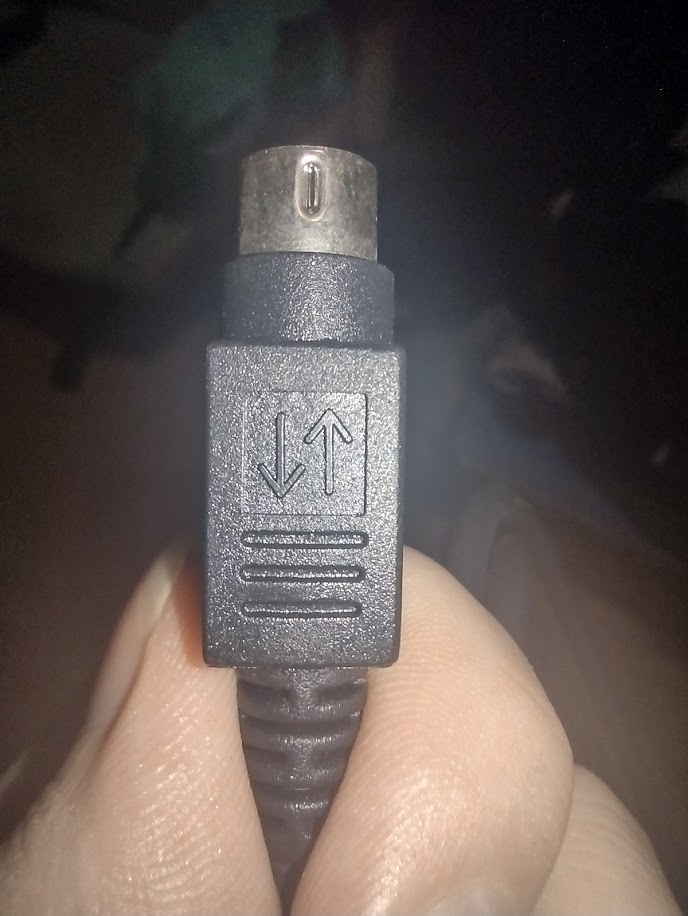I swear I've seen a vrchat avatar that looked just like that, but I can't find any sign of it
Dipole
I wasn't aware that there were any games that could make meaningful use of 16 cores, let alone games that might want more. Was there a major advancement in game programming when I wasn't looking? Or is the headline as far off base as I think?
"If one root server directs traffic lookups to one intermediate server and another root server sends lookups to a different intermediate server, important parts of the Internet as we know it could collapse"
this doesn't pass the sniff test. Records sometimes being out of date for some users is par for the course for DNS. Domain owners already need to account for that. Also, the "intermediate server"s in question would be things like the .com and .org operators' servers. I would hope the likes of Verisign and the Public Interest Registry can handle a delay in sunsetting a DNS server to accommodate something like this.
Likely Solved
Of the options people have presented, a video card is by far the most likely for us to have owned at the era those options are from. The two-way arrow symbol on the connectors does give a little bit of doubt, but it seems pretty clear at this point that if I still owned the matching product, I wouldn't use it, and that's enough info for my needs
Both din connectors have a two-way symbol 
It is definitely 7 pins, not 9. The pin layout matches this image on the wikipedia page for mini din: https://commons.wikimedia.org/wiki/File:S-Video_7-pin_quasi-DIN_connector.JPG#/media/File:S-Video_7-pin_quasi-DIN_connector.JPG
I tested the pin connections and it does match the "compatible with an S-video... plug" in the image's caption, but I don't know if the keying allows for that. The key on the 7-pin is both wider and thinner than on the 4-pin.
The fact that this is a long cable instead of a short adapter does give me the impression that both the 4-pin mini din and the rca connector are supposed to be used simultaneously.
I don't believe we ever owned a capture card, but it's at least plausible to me that an old video card may have used it.
Testing with the multimeter, the outer pins of the 7-pin connector are 1-to-1 with the pins in the same places of the 4-pin connector. I read the wikipedia article on mini din connectors more carefully, and there is an indication that this scheme was sometimes used to have a socket which could accept either an S-video cable or the proprietary one. However, the keys don't look compatible. The key on the 7-pin is both wider and thinner than on the 4-pin.
the center pin of the row of 3 connects to the pin of the rca connector, and the ring of all 3 connectors are connected together. The center two pins of the row of 4 are not connected.
That is indeed a Nintendo RF converter in the background, but I don't believe we ever owned a Sega console. Granted, I didn't know we had a SNES until it was found a few years ago in a shed that was being torn down
Is this a continuation of Lemmur? The Lemmur logo appears when the app loads, but the project is not marked as a fork of Lemmur and the readme makes no mention of Lemmur
The article seems to take the stance of "thinking about using a commercial VPN? Just use TOR!". But in my experience, TOR is glacially slow, and it's also not suitable for ordinary browsing because of how widely-blocked the exit nodes are. The article at least acknowledges the blocking problem, but for an article which focuses on tradeoffs, it doesn't acknowledge that there's a valid trade-off between TOR and a commercial VPN. A commercial VPN is faster and less blocked than TOR, but there is still an entity with direct knowledge of your browsing (the VPN company itself), there is more vulnerability to correlation (the VPN doesn't [and probably can't] change your exit node for each website, like the TOR browser would), and a commercial VPN is an expense. You don't have to jump all the way from "no-one can know which website I'm browsing" to "anyone tapping any leg of my connection can know which website I'm browsing" just because the website blocks TOR exit nodes.
For reference: I have a commercial VPN subscription, which I have connected for my daily browsing -- in large part to reduce the cognitive load of "what if X party knew I was visiting Y website" for every website I visit. I also have the TOR browser installed, and use it occasionally -- for when I'm concerned about the outcome of "what if the VPN company is breached/subpoenaed/sells my data/etc.". I don't put any stake in the ubiquitous "no logs" claims of VPN companies, since it's completely unverifiable.
I do at least appreciate the article acknowledging the grossly misleading advertising of nearly every VPN company. They advertise their product as solving problems which are solved by HTTPS and not solved by VPNs